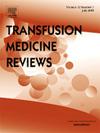Surgical patients are often transfused to manage bleeding and anemia. Best practices for red blood cell (RBC) transfusion administration in patient having noncardiac surgery remains controversial and a robust evaluation and description of perioperative transfusion practices is lacking. We characterized perioperative hemoglobin concentrations and transfusion practices from the prospective VISION cohort which included 39,222 patients aged ≥45 years who had inpatient noncardiac surgery. Variations in transfusion practices were analyzed using hierarchical mixed models, and associations with mortality and complications were evaluated using a nested frailty survival model. Within the cohort, 16.1% (n = 6296) were given perioperative RBC transfusions, with the fraction declining from 20% to 13% over the 6-year study period. The proportion of patients transfused varied by surgery type from 6.4% for low-risk operations (i.e., minor surgery) to 31.5% for orthopedic surgeries. Variations were largely associated with patient hemoglobin concentrations, but also with center (range: 3.7%-27.3%) and country (0.4%-25.3%). Even after adjusting for baseline hemoglobin, comorbidities and type of surgery, both center and country were significant sources of variation in transfusion practices. Among transfused participants, 60.4% (n = 3728/6170) had at least 1 hemoglobin concentration ≤80g/L and 86.0% (n = 5305/6170) had at least 1 hemoglobin concentration ≤90g/L, suggesting that relatively restrictive transfusion strategies were used in most. The proportion of patients receiving at least 1 RBC transfusion declined from 20% to 13% over 6 years. However, there was considerable unexplained variation in transfusion practices.


